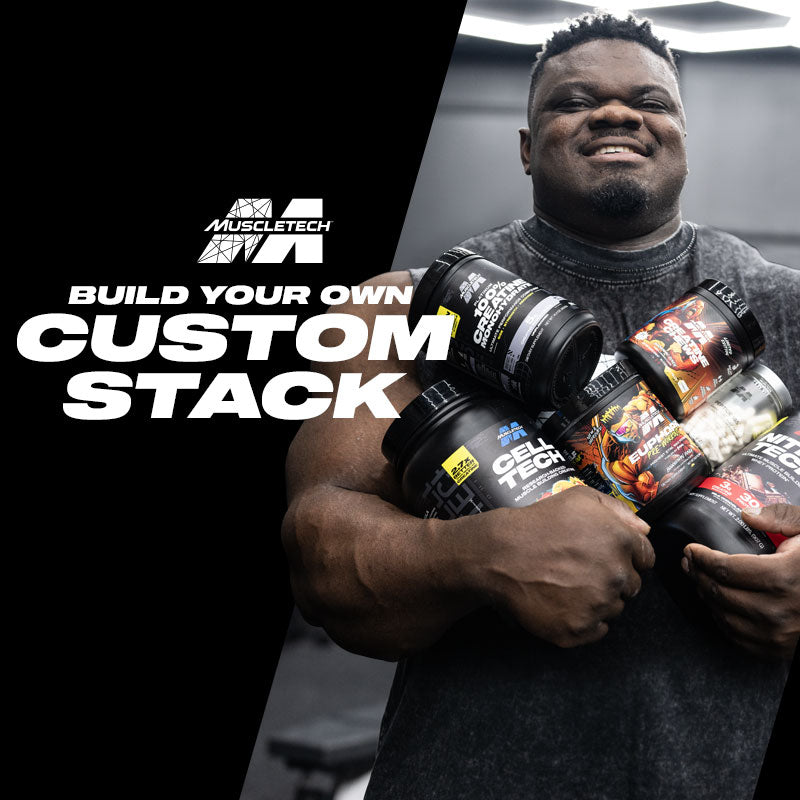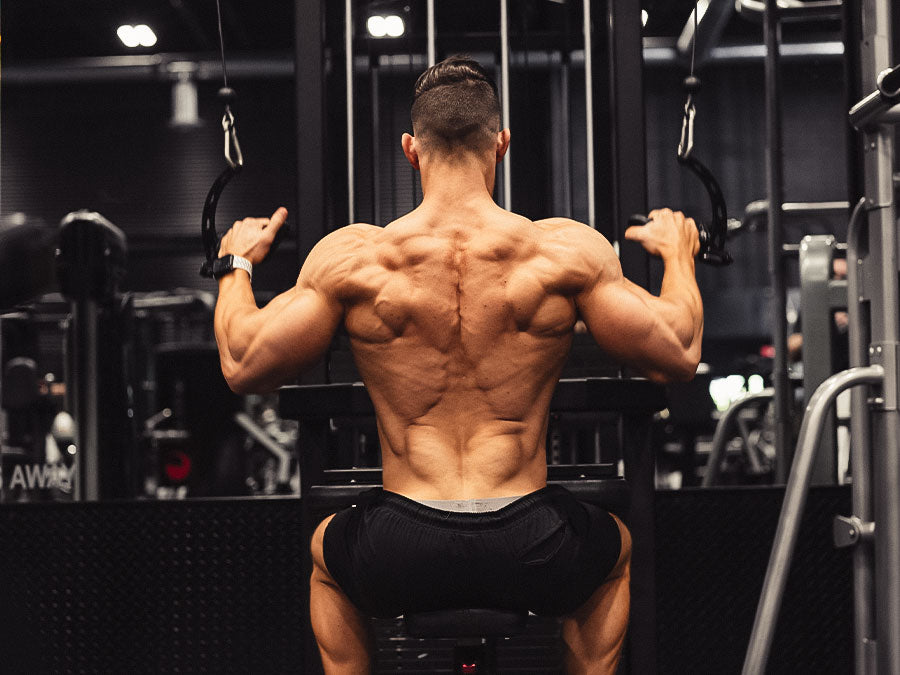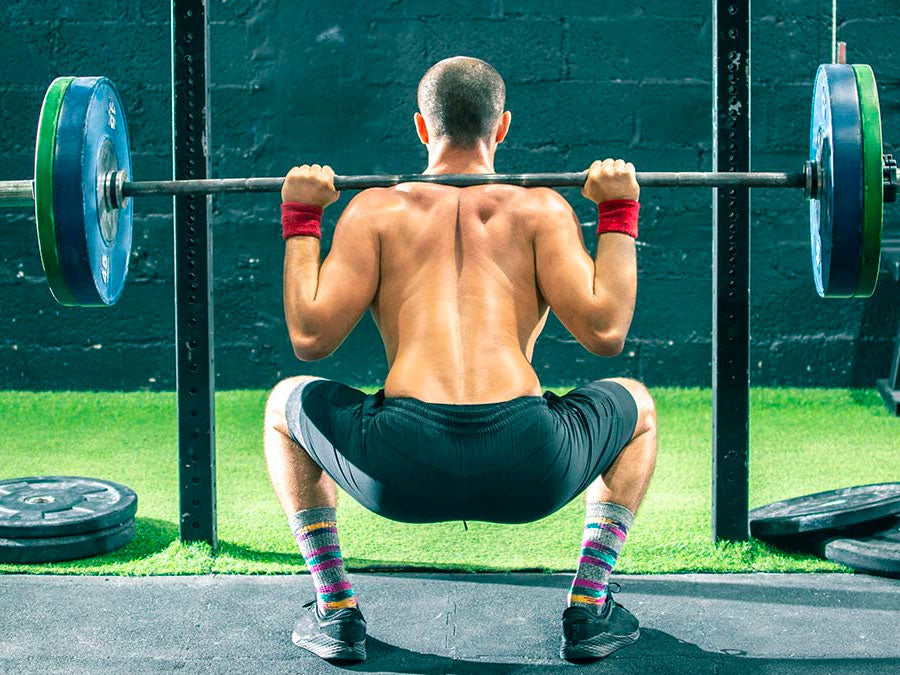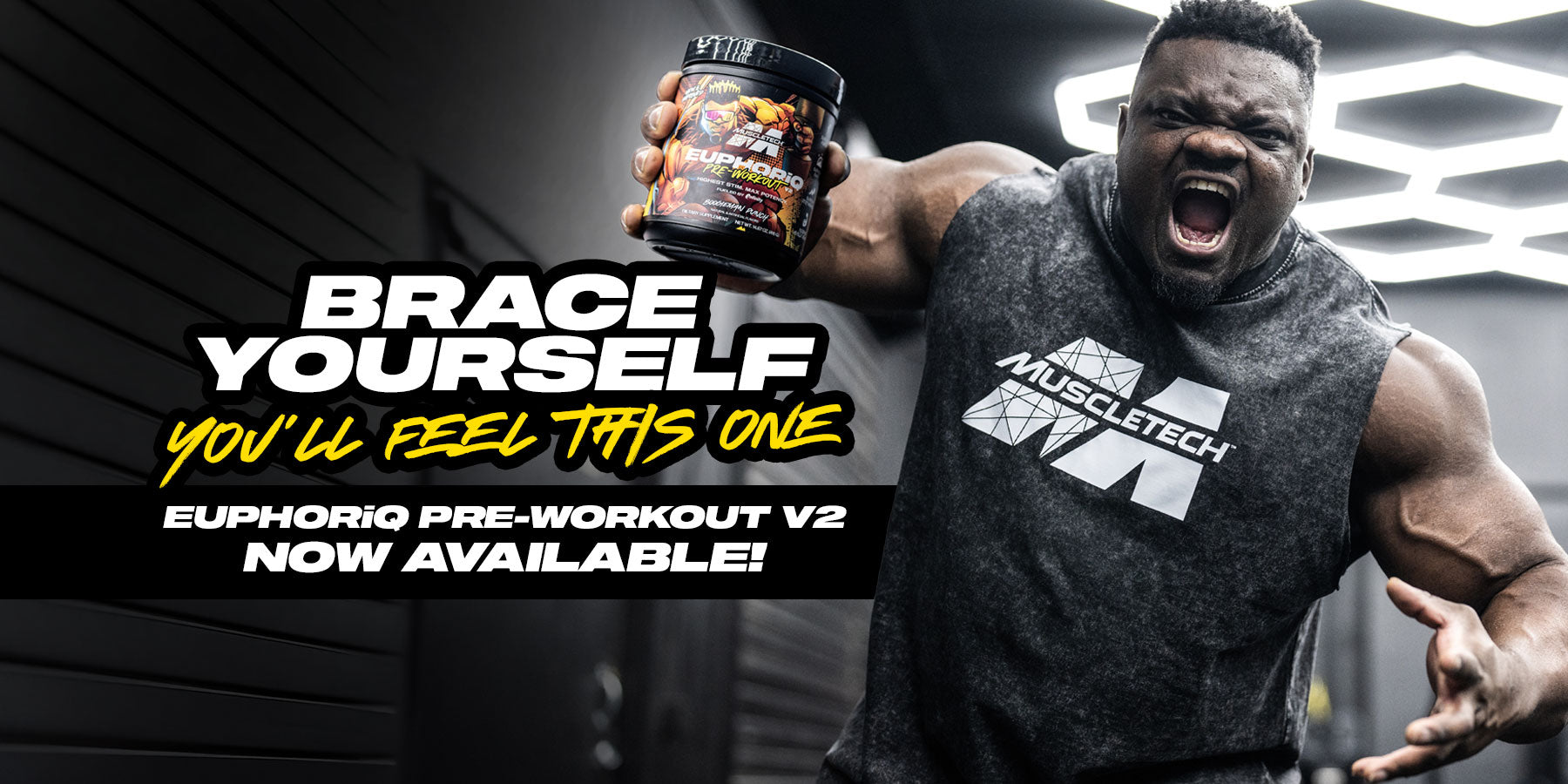Get Down with the Thickness
Truly impressive backs are a rare sight, though there are plenty of wide backs out there. That’s because anyone with the good fortune of being born with a bone structure marked by wide clavicles and narrow hips and waist will automatically have a natural V-taper before they build even one ounce of muscle on their backs.
These types quickly display notable back width even if they largely ignore rowing movements and focus more on lat pull-downs and chin-ups. But when they turn to the side, the illusion goes up in a puff of smoke.
They are two-dimensional and have zero front-to-back thickness, which you need substantial beef in the pecs and lats to display. Having some width to your upper back might make you look like you at least lift weights, but a seriously thick, dense back screams rugged power.
People will instantly identify you as a mega-jacked specimen who looks like he could pull a Mack truck with one arm! The “secret” to a back that looks like it has enough beef to feed a village is a steady diet of rows. Before we get into the types of rows you need to be doing, here are some tips on how to get the most out of any row.
Buy Premium Protein Powders [Free Shipping]
4 Keys to Proper Rows:
1. Full Range of Motion
The great eight-time Mr. Olympia Lee Haney was known for having the best back of his era, yet the man who carried 250 pounds of shredded beef wasn’t known to use the heavy weights some would have expected.
For example, he rarely went heavier than 225 pounds on barbell rows or 75 pounds for his one-arm dumbbell rows. “But,” he noted over 30 years ago, “I go all the way up and all the way down.” It’s quite common to see guys with a dumbbell as heavy as 120 to 200 pounds in one hand pulling it only about halfway up.
This is pure ego-lifting, and it explains why almost none of them have any real back thickness. Use a weight that you can pull for a full contraction and lower for a full stretch of the lats.
Don’t worry that it’s not heavy enough to impress that baddie in the yoga pants next to you. Do your rows correctly and soon you can impress her with your jacked back.
Also Read: Top Supplements for Men
2. Mind-Muscle Connection
The first question I ask anyone who tells me they can’t seem to build any back thickness is “Do you feel your lats working when you train them?”
Almost to a person, the answer is no. Admittedly, the back is probably the toughest muscle group to foster a mind-muscle connection with, and not just because we can’t see it in the mirror.
It takes intense focus and concentration, and I urge anyone struggling with this issue to start all over again with much lighter weights and an exaggerated emphasis on the contraction.
Pick a Bottle of Fine Creatine Supplement
Once you establish that deep connection, you can gradually start increasing the weights you use. A true master of mind-muscle connection can pantomime any back exercise and not only feel the lats working but also achieve an actual pump.
3. Scapular Retraction
Not enough is said about the pivotal role the scapulae, or shoulder blades, play in proper rowing form. In a vertical pull such as chin-ups or lat pull-downs, you pinch the shoulder blades together as you drive the elbows down toward your hips.
In all rows, you also want the shoulder blades to touch each other as you drive the elbows back. If the scapulae don’t come together, rest assured that you’re working mostly biceps and rear delts. It’s a simple concept that you must take to heart and put into practice at every back workout.
4. Controlled Negatives
Every rep has two components: the positive/lifting/concentric phase and the negative/lowering/eccentric phase. If you fail to control the weight on the negative and simply let it drop back down to the starting position, you’re missing out on half the effectiveness of every rep you do.
You’re also setting yourself up for a potential muscle tear, but that’s a whole other topic. The point is that you should squeeze the lats as you lift and feel them stretch as you lower. Studies have shown that the stretch position of the rep is actually responsible for more of the growth stimulus than the contraction.
I always tell people, “Lift fast, lower slow.” That is, it’s okay to use an explosive tempo for the concentric phase, but slow it down considerably for the eccentric. Fifty years ago, Arthur Jones, father of the Nautilus empire, prescribed a lifting tempo of two seconds up, four seconds down.
Most would agree that he was going just a bit too far and making the reps too slow, but he at least brought attention for the first time to the need to slow down the negatives.
Barbell Rows
If you want big legs, you squat, and for a big chest, you bench press. Bent barbell rows are the go-to for back thickness. How productive are they?
When Evan Centopani was in his competitive prime, he told me there were back days where he would start with barbell rows and had such a great feeling in them for the lats that he would wind up doing 10 work sets of them and calling it a day!
In the old days, bodybuilders really bent over, as their torso was parallel to the ground as they rowed. Over time, a slightly higher angle was adopted, about 45 degrees. You will often see lifters completely bastardizing this exercise and standing nearly upright, as this allows the use of much heavier weights.
Premium Pre-Workout Supplements
They appear to be doing something closer to a shrug with a slight forward lean rather than a row. Remember that gravity pulls free weights down in a straight line toward the center of the earth, so you must bend over to get any real range of motion (ROM).
As for the grip, most people do best with the standard overhand grip. Dorian Yates popularized the underhand or reverse-grip version during his Mr. Olympia reign, as he said this put the biceps in their strongest pulling position.
Of course, people listened and emulated his variation because he had the thickest and freakiest back seen up to that point in bodybuilding history. Try both styles and see which one allows you to get the best feeling in your lats. In the end, that’s what’s really important.
Dumbbell Rows
Most people think only of the classic one-arm dumbbell row here, but you can also row with two dumbbells, and all dumbbell rows can be performed either freestanding and bent over or face down on an incline bench, my personal favorite.
You also have options in terms of how much you rotate your hand, all the way from fully pronated (palms down) to fully supinated (palms up).
This freedom of motion provides you the opportunity to really find your “sweet spot” or groove where you’re hitting your lat just right. Focus more on that feeling in your lats instead of worrying about trying to row the heaviest dumbbell at your gym.
T-Bar Rows
The T-bar row is another old-school classic. Ronnie Coleman famously had two different back workouts every week, and the first, focusing on thickness, featured barbell rows, T-bar rows, and deadlifts—and very few humans have ever had a thicker back than Ronnie.
He did “corner rows,” which means setting one end of an Olympic bar in a corner. If you do these, you will find you need to set a heavy dumbbell across that end in the corner or else the bar comes flying off the ground when you row. Most gyms now have dedicated platforms with a sleeve to put the end of the Olympic bar into that on a hinge to avoid that issue.
Shop & Save on Testosterone Supplements
There are also T-bars on elevated platforms with several different grip options, as well as the supported T-bar row with a chest pad. All are viable choices to thicken up your back. I find I can do freestanding T-bar rows even with a glass lower back if I set my legs far apart and squat down low.
Machine Rows
There are such a wide variety of excellent rowing machines available that odds are your gym has at least a few to choose from. They’re all slightly different, and many feature several options for grip width and hand placement, allowing you to attack your lats from unique angles.
Personally, I feel it’s best to start with a free weight row while you’re fresh and best suited to maintain balance and coordination, then move on to machines. Either the resistance is loaded on with plates or there will be a weight stack so all you need to do to change the weight is move the pin to a lighter or heavier weight.
And don’t worry one minute about machines not being “hardcore,” because Dorian Yates always included at least one Hammer Strength row when he trained his legendary back that blocked out the sun.
Cable Rows
Cable rows are another versatile movement as any decent gym will have a nice assortment of grip attachments to choose from and clip on. There’s the standard attachment that most people use, which sets your hands close and in a neutral position (palms facing each other), or you can use a lat pull-down bar for a wide overhand grip.
Shop Premium Vitamin Supplements
You could even attach the double rope for a very different feel. One thing to pay heed to is not allowing your torso to lean back excessively as you pull. This will drastically reduce your ROM and shortchange your results.
A slight lean back with each pull is okay, but be sure you’re driving your elbows all the way back and pinching your shoulder blades together on every rep.
“Meadows” Rows
The late IFBB Pro John Meadows was a master at innovating new exercises and exercise variations to spur new gains. Back had been his own weak point earlier in his bodybuilding career, and one movement he created to fix that problem was the Meadows row.
This is done with an Olympic bar set into a corner or some other stable spot, and you set yourself up standing so the bar faces a perfectly horizontal line through your torso. Meadows rows are done one arm at a time holding on to the actual sleeve of the bar (straps are recommended as this is wider than the bar itself).
Save on Premium Weight Loss Supplements
If you’re working your left lat, the bar would be to your left, and stand to the right to work your right lat. You will immediately feel a deep contraction if you’re doing these correctly.
Rack Pulls
Full deadlifts from the floor are wonderful, but that initial pull works mainly the quads, hams, glutes, and lower back. By starting the movement off from just a couple inches below your knees, this partial movement now focuses more on the back itself, mainly the lats, upper back muscles, and traps.
I loved these because I could go much heavier than I could with full deads, as in six or seven plates a side rather than three or four (I sucked at deadlifts).
Note for Those with Lower Back Problems
If you’re like me and among the many millions of lifters out there with a history of lower back injury and chronic lower back pain, barbell rows and T-bar rows are likely off the table for your training options. You just don’t have the lower back stability to bend at the waist holding on to a heavy barbell anymore.
Read: 10 Workout Routines for Bad Backs
Thankfully, dumbbell rows and any type of rowing machine with chest support are both safe and effective for you to blast your lats with. Hammer Strength, Arsenal Strength, and Panatta Sport are just three equipment manufacturers that produce a variety of excellent rowing machines with support to brace your torso against.
My absolute favorite rowing movement is one- or two-arm dumbbell rows, face down on an incline bench. I haven’t been able to do a heavy barbell row in close to 10 years now, yet my back is just as thick today if not thicker than when I could knock out a great set of 315 to 365 for 12 any old day on barbell rows.
Get Rowing to Start Growing a Thicker Back!
Hopefully I’ve impressed upon you the need to put some seriously hard work in on various rows to make your back much thicker and denser than it is right now. I’ll leave you with some thickness-focused back workouts to implement so you can start today.
The general warm-up for all of them should be five to eight minutes on a rower, but you could also do a few sets of chin-ups or lat pull-downs. Warm-ups for each exercise aren’t shown, but absolutely do a few sets starting light and gradually moving up on the first two exercises before moving on to your heavier working weights.
Workout A
One-arm dumbbell rows 4 × 12, 12, 10, 8 each arm
T-bar rows 4 × 10–12
Machine rows 4 × 12–15
Rack deadlifts 4 × 10–12
Workout B
Barbell rows 4 × 15, 12, 10, 10
Meadows rows 4 × 10–12 each arm
Seated cable rows 4 × 12
Machine rows 4 × 12
Workout C
T-bar rows 4 × 15, 12, 10, 8
Two-arm dumbbell rows, face down 4 × 12
On incline bench
Cable rows 4 × 15
Rack deadlifts 4 × 10–12
Buy Best Bodybuilding Supplements for Quicker Results
Read More Blogs:












